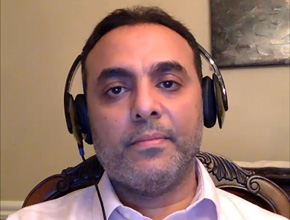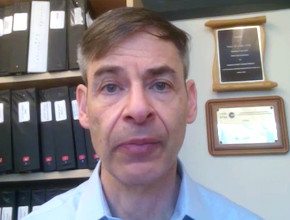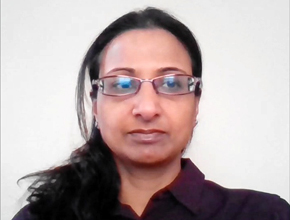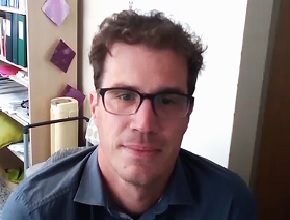Dr Dominik Mertz, associate professor in the Division of Infectious Diseases at McMaster University and medical director of infection prevention and control at Hamilton Health Sciences, joins Dr Roman Jaeschke to describe the current status of the coronavirus disease 2019 (COVID-19) pandemic and answer some of the commonly repeated questions about testing, immunity, and masks.
This interview was recorded on March 18, 2020.
Roman Jaeschke, MD, MSc: Good afternoon. Welcome to another edition of McMaster Perspective. Doctor Dominik Mertz is one of our leading experts on viruses, including the novel coronavirus (severe acute respiratory syndrome coronavirus 2, or SARS-CoV-2). He gave us a wonderful medical ground round a few days ago and I asked him to share some of his knowledge with us.
Doctor Mertz, maybe we’ll start with what’s happening in Canada and what’s happening around the world.
Dominik Mertz, MD, MSc: Over the last week the number of cases has significantly increased in Canada. We are in the 400s right now. I believe we had 4 deaths in British Columbia and 1 potentially associated death today in Ontario. [As of March 22, there were 10 deaths in BC and 3 deaths in Ontario.]
Worldwide, in China, where it all started, things [seem to have] slowed down if they continue the testing and don’t find any more infected people. But it really ticked up in Italy, which is currently the hotspot worldwide. Iran is another one that we are most concerned about. But also Spain, Germany, and still South Korea are the other ones that are in the range of 5000 to 10,000. [Confirmed cases as of March 22: China, 81,499; Italy, 53,578; Iran, 21,638; Spain, 24,926; Germany, 21,463; South Korea, 8897.]
Another big “black box” is the United States. We know they have a big issue with swab supply. They are only reporting roughly 5000 cases at this point, but most likely there’re many more infected people who simply weren’t tested. [Confirmed cases as of March 22: 15,219.]
Roman Jaeschke: Thank you for describing the current situation. What I wonder about is if the cases are really disappearing in China, what will happen if they come back to the normal way of life? What if they stop this containment? Can you predict this? Can you guess?
Dominik Mertz: I can only guess or hypothesize what may happen. Presumably there’s many more people that got infected than the ones that have been confirmed, knowing that there’s a large population out there that probably had mild symptoms or was asymptomatic. But even with that there’s probably not enough immunity in the population yet to prevent the virus from coming back. One can hypothesize that if you drop all those mitigation strategies, it will start again and again reach a critical mass of people to infect, resulting in a second wave of infections.
Roman Jaeschke: Is there any chance to check how many people were exposed? How many people developed serology or immunity?
Dominik Mertz: If we had the serology available, we could. Apparently they’re working on this. I don’t know how close they are in China to being able to run serology on patients, but there’s nothing that I’m aware of that has been tested and validated already. For sure that would finally give us the answer to how many patients are out there that didn’t get tested and may have had only very mild or no symptoms at all but still were able to mount an immunity and went through the infection without it becoming apparent.
Roman Jaeschke: Do we know anything at the moment about whether going through the infection confers long-term immunity?
Dominik Mertz: We don’t know this yet. We can hypothesize that we should have at least partial immunity, so hopefully when the virus comes back and we have the next wave, for instance, in the winter, we will have a baseline immunity, at least partial, so we won’t see that many severe infections anymore as we’ve seen this time. But it’s too early to tell. We don’t know yet.
Roman Jaeschke: Now a difficult question. What do we know about treatments and how should we find out what’s working and what’s not? What’s your opinion?
Dominik Mertz: I think we’re at a stage where there’re many hypotheses and several drugs out there with at least some experimental or biological plausibility to work. Those include old drugs, like HIV drugs, that may have activity against SARS-CoV-2. My personal opinion is that we should use those drugs, we should use them in randomized controlled trials, so we will know eventually what’s the right way to treat those infections, rather than just using them without collecting appropriate data.
Roman Jaeschke: You are our expert here. People are probably calling you all the time. Could you comment on some frequent questions?
Dominik Mertz: A big question recurring all the time is, “What’s the appropriate personal protective equipment (PPE)?” In particular the appropriate mask for staff who have contact with either suspected or confirmed cases. Around the globe there’re very varying recommendations. Looking at our Ontario journey, we started off with N95 respirators, and last week we downgraded—or that’s how people feel about it—to surgical masks. This is based on moving from a precautionary principle to starting to understand this pathogen, and everything so far suggests that it’s not airborne, so we can use just a procedural or surgical mask without needing the additional protection from airborne pathogens.
Roman Jaeschke: Last question, I promise. Correct me if I’m wrong, but if we had an unlimited number of tests, we should probably be testing a lot more people than we do, maybe even to find all those asymptomatic cases. We’re not doing it. What’s the current situation? Who’s being tested?
Dominik Mertz: It really depends on the situation and jurisdiction. When you’re looking at Canada, we are doing many more tests than the United States, but the United States has many times more patients, or bigger population, than we have in Canada. I would say we are testing a lot in our setting.
If we had unlimited tests, we would probably test everyone who comes in with any type of respiratory symptoms. So if you had the sniffles, you would get tested, which is something that we’re currently not doing because we can’t.
In the current situation it depends on whether you’re still in a containment setting or whether you’ve moved to mitigation. Containment is as long as you have clear risk factors—typically international travel or exposure to someone. If you have that in combination with suspicious symptoms, you would get tested. Once you have community transmission in the population that you serve, you would optimally move towards testing everyone who presents with respiratory symptoms, but that’s probably not doable in most settings, so you would focus on those where the finding has implications and that would be the admitted [hospitalized] patients, because we need to protect our health-care workers. We test our health-care workers much more aggressively, because we want to know if someone has any signs of a respiratory infection. We want to rule out that this individual has COVID-19 and may transmit that to the patients. So there’s clearly a shift then.
Usually what the European countries are doing is they just assume that people with mild symptoms have SARS-CoV-2 and have them stay home until they’re doing well.
Roman Jaeschke: This is all very helpful and dynamic. I hope to talk to you again soon. Thank you very much.
 English
English
 Español
Español
 українська
українська











